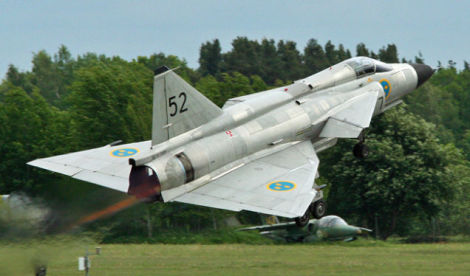Welcome to This Date in Aviation History, getting of you caught up on milestones, important historical events and people in aviation from February 6 through February 8.
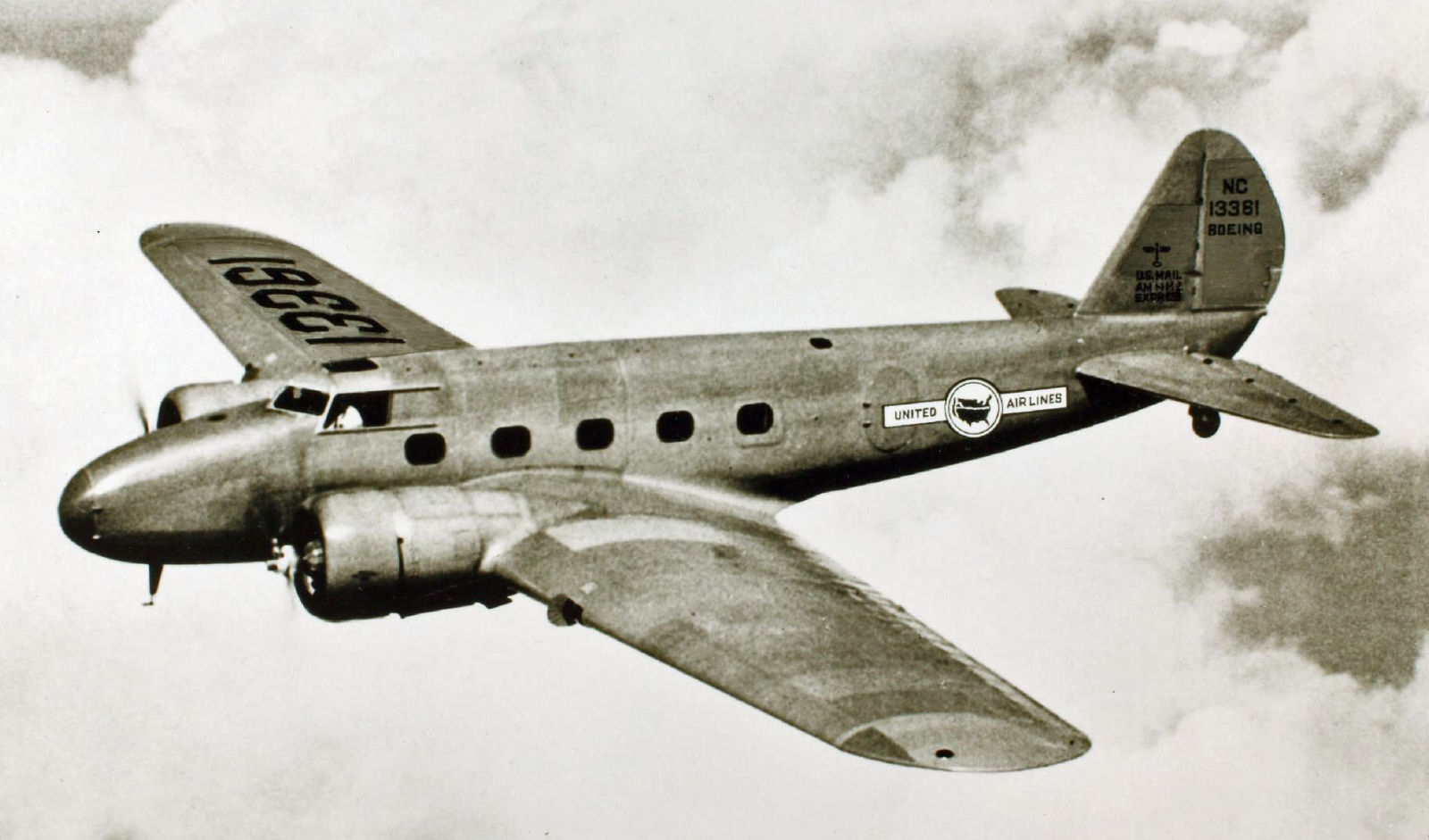
February 8, 1933 – The first flight of the Boeing 247. The American-born son of German father Wilhelm Böing, William Boeing founded the airplane company that bears his name in 1916, and the first airplane he produced with his business partner George Westervelt was the Boeing Model 1, a sea-going biplane. They only built two, and Westervelt soon left the fledgling company. But since that somewhat inauspicious beginning, the Boeing Company has grown into one of the world’s largest airplane manufacturers, producing all types of civilian airliners, military aircraft, and spacecraft. But for most people, the company today is best known for their commercial jetliners, and that long heritage of excellence and design innovation began with the Boeing 247.
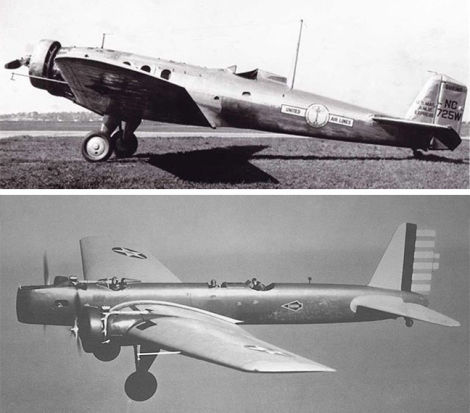
The years between the World Wars is recognized as the Golden Age of Aviation, a period marked not only by rapid technological developments of aircraft and a quest for ever-greater speed, but also the rise of the commercial aircraft industry. In an effort to capitalize on the emerging market for passenger aircraft, Boeing drew on what it learned with their earlier Monomail mail plane, as well as the YB-9, the first all-metal monoplane bomber flown by the US, to create an airliner that was truly advanced for its day. The Model 247 employed all-metal semimonocoque construction of anodized aluminum, a cantilevered wing and retractable landing gear. Advances in flight controls included trim tabs, an autopilot, and de-icing boots to prevent dangerous ice accumulation on the wings.
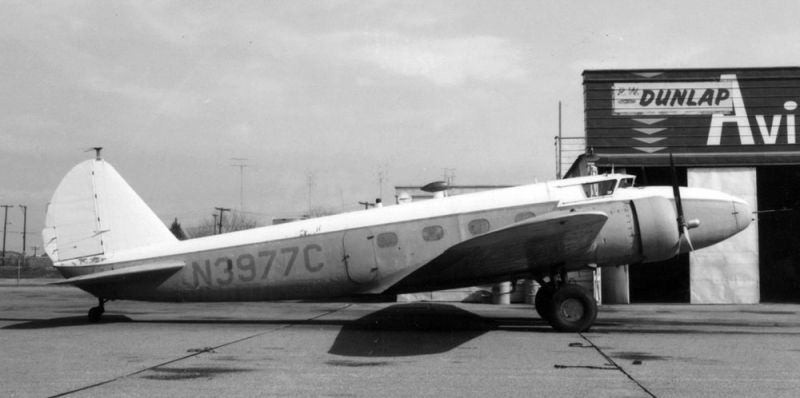
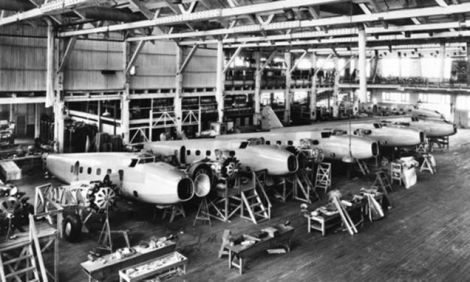
The need for the 247 was so great that it was ordered off the drawing board, with the first production aircraft going solely to the new United Air Lines (owned by Boeing), who received the first 60 aircraft of the 75 total built. Powered by a pair of Pratt & Whitney Wasp radial engines (Pratt & Whitney was also part of Boeing at the time), the 247 was faster than contemporary biplane fighters, and was the first twin-engine airplane capable of flying with just one engine. When variable pitch propellers became standard on the 247D, the airliner could fly at over 11,000 feet, fully loaded, on just one engine. The relatively small cabin accommodated 10 passengers, five to either side of the aisle, and they flew in the relative comfort of a thermostatically heated, soundproofed cabin. For its innovative design, the 247 received the Collier Trophy in 1934.
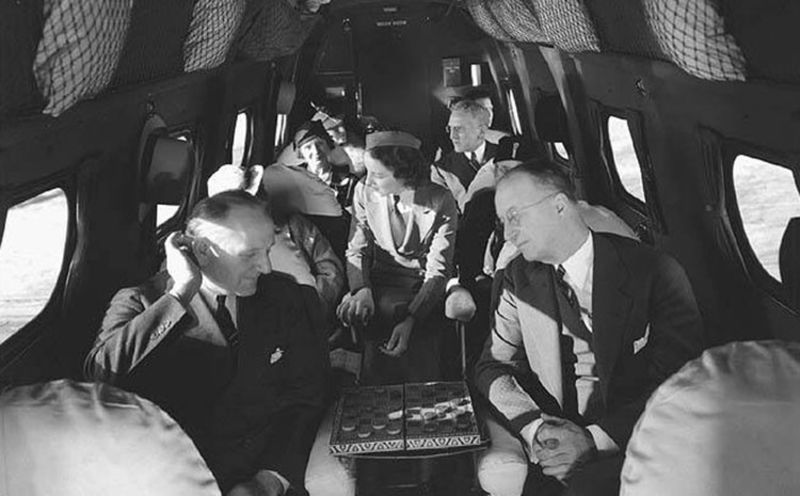
In order to promote the new airliner, Boeing entered it in the MacRobertson Air Race from England to Australia, a grueling race of over 11,000 miles. The production 247, piloted by the flamboyant Roscoe Turner, now hangs in the Smithsonian National Air & Space Museum in Washington, DC. But Turner didn’t win the race. The 247 came in second to a Douglas DC-2, a result which proved ominous for the future of the 247.
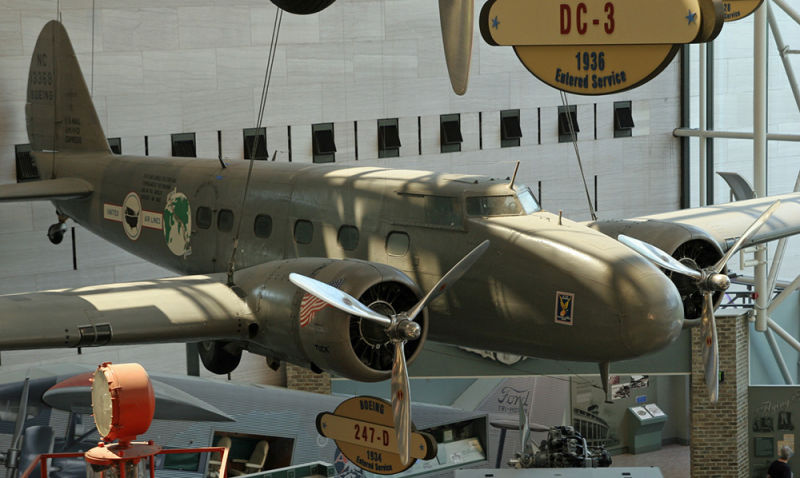
When Boeing began producing the 247, they sold them exclusively to Boeing Air Transport, their affiliated airline and the precursor to today’s United Airlines. This exclusive contract led TWA executive Jack Frye to turn to Douglas for airliners, and the resulting DC-3 ended up taking the world by storm. Despite the 247's ability to cross the country in around 20 hours, it was small when compared to the DC-3, and the newer aircraft coming from Douglas could hold more passengers and thus fly more economically. Where only 75 247s were produced, Douglas built over 600 DC-3s. By the outbreak of WWII, the 247 was mostly finished flying passengers, but a number were drafted into US Army Air Corps service as the C-73. Though the 247's service life was relatively brief and it was built in small numbers, it bears a strong resemblance to another Boeing aircraft, the B-17 Flying Fortress. And Boeing built almost 13,000 of those.
Short Takeoff
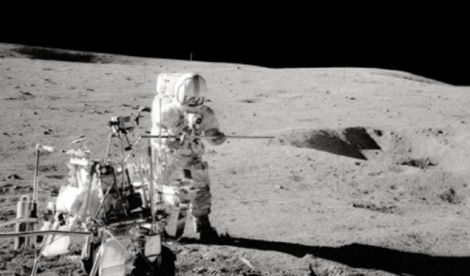
February 6, 1971 – NASA astronaut Alan Shepard drives two golf balls on the Moon. Apollo 14 was the eighth manned mission of the Apollo program, the third manned mission to land on the moon, and the first after the near-disaster of Apollo 13. Mission Commander Alan Shepard and Lunar Module Pilot Edgar Mitchell spent two days on the lunar surface, while Command Module Pilot Stuart Roosa remained in orbit around the Moon. The astronauts collected rocks and carried out several experiments, but the TV highlight of the mission occurred when Shepard struck two golf balls in the reduced gravity of the Moon using a makeshift golf club he had brought from Earth. Shepherd said the ball traveled “miles and miles and miles,” though it’s unlikely that his shot traveled much more than one mile. Had he struck the ball perfectly, though, it could have traveled 2.5 miles and stayed aloft for 70 seconds, as the Moon’s gravity is only 5/6 of the Earth’s.

February 6, 1958 – A British European Airways Airspeed AS-57 Ambassador crashes on takeoff from Munich-Riem Airport, killing 20, including 11 players and coaches of the Manchester United football club. Known as the Munich air disaster, the crash occurred when the Ambassador was making its third attempt to take off after engine trouble caused two aborted takeoffs. Under pressure to remain on schedule, the captain attempted a third takeoff, only to have the plane slowed by an accumulation of snow and slush at the end of the runway, robbing the plane of takeoff speed at a critical moment. The aircraft overran the runway and struck a house. Twenty of the 44 passengers were killed outright, while three more succumbed to injuries after being hospitalized. The crash decimated the powerful Man U club during their attempt to become the third team to win three consecutive championships, and it would be years before the team again rose to prominence.
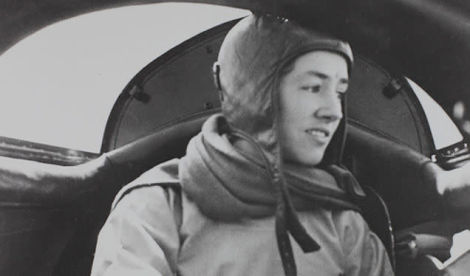
February 7, 2001 – The death of Anne Morrow Lindbergh, the wife of famed aviator Charles Lindbergh and an accomplished aviator herself. Born on June 22, 1906, she became the first American woman to earn a glider pilot license in 1930 and, with her husband, explored and charted intercontinental air routes. For this work, she and Charles were awarded the Hubbard Medal by the National Geographic Society and the US Flag Association Cross of Honor. The mapping trip covered 40,000 miles of flying and included visits to five continents. Lindbergh was inducted into the National Aviation Hall of Famein 1979, as well as the International Women in Aviation Pioneer Hall of Fame.
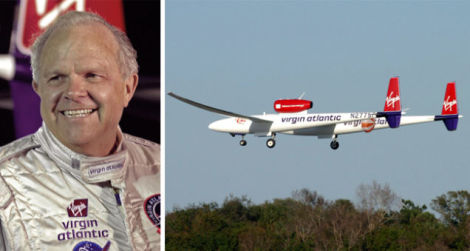
February 8, 2006 – Steve Fossett takes off to set an absolute distance record in an airplane. Steve Fossett was a well-known adventurer who set numerous records in aviation, as well as other records in skiing, mountain climbing, and sled dog racing. As a balloonist, Fosset became the first person to travel across the Pacific Ocean in 1995, then became the first to circumnavigate the globe nonstop in a balloon in 2002. Turning to fixed-wing records, Fossett made the first nonstop solo circumnavigation of the Earth in 2005 flying the Virgin Galactic GlobalFlyer, an aircraft that had been designed and built by Burt Rutan. To top that feat, Fossett again took to the skies in the GlobalFlyer and departed from Kennedy Space Center in Florida, flew around the world, and passed Florida before landing in Bournemouth, England. The flight covered 25,766 miles and took 76 hours and 45 minutes to complete. Fossett died in 2007 in the crash of his private single engine Bellanca Super Decathlon.

February 8, 1974 – The crew of Skylab 4, the final mission to the Skylab orbiting space station, splashes down in the Pacific Ocean. The only space station run exclusively by the United States, Skylab was launched into Earth orbit on May 14, 1973 and hosted three crews between May 1973 and February 1974, with the visits totaling 171 days in space. The Skylab 4 crew of Commander Gerald P. Carr, Pilot William R. Pogue, and Science Pilot Edward G. Gibson launched on November 16, 1973 and spent a total of 84 days aboard the orbiting space station, a duration record that stood for four years. During their time in orbit, the crew completed three spacewalks (Extravehicular Activities, or EVA) to retrieve and replace film canisters in the Apollo Telescope Mount (ATM), and observe newly-discovered Comet Kohoutek during its close pass to the Sun. They also carried out many other experiments and celestial observations. NASA had hoped to prolong the life of Skylab by using the Space Shuttle to push it into a higher orbit, but delays in the Shuttle program made that impossible, and Skylab fell to Earth on July 11, 1979.
February 8, 1967 – The first flight of the Saab 37 Viggen. Developed as a replacement for the Saab 32 Lansen, the Viggen (Thunderbolt) was the first aircraft produced in large numbers to make use of a forward canard for added STOL capability, as Swedish fighter aircraft routinely operate from short runways or prepared roadways. Designed to be supersonic and robust, the Viggen was originally intended as a ground attack aircraft, with subsequent variants produced for aerial reconnaissance and maritime patrol. Saab also produced a two-seat trainer variant, and the final variant was the JA37 all-weather fighter-interceptor. The Viggen was introduced in 1971, and 329 a total of 329 were built from 1970-1990.
Connecting Flights
If you enjoy these Aviation History posts, please let me know in the comments. And if you missed any of the past articles, you can find them all at Planelopnik History. You can also find more stories about aviation, aviators and airplane oddities at Wingspan.
